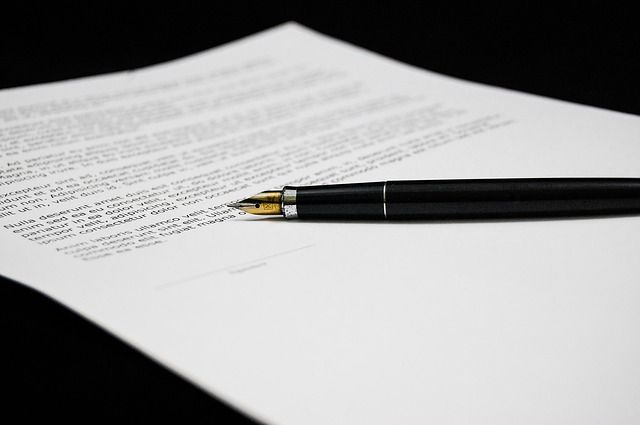
If you want to sell the idea of your novel to a literary agent or small press' acquisition editor you must have an excellent query letter. Not an excellent book, an excellent query letter.
There are many excellent books out there that will never be published (by a publisher that uses editorial discretion*) because the author didn’t demonstrate an understanding of the market, a hook, a plan, and a fit.
Sure, you could self-publish, but in order to sell your product you still must have a strong grasp of these components (and many more) if you’re going to make money.
Which leads me to the number one mistake authors make when writing a query letter--not understanding that publishing is a business, and businesses bet on projects with the highest chance of making a profit. Publishing is like any other business. Publishers must make a profit to accept and publish more manuscripts. There is absolutely nothing wrong with that.
You don’t work for free, and neither do they. We’ve all gotta eat.
So, you must demonstrate to a literary agent and publisher that your book is worth the financial risk and/or the risk to the publisher’s brand.
The way you demonstrate that is by addressing the following six must-haves in your query letter. These are in addition to a well-crafted summary of the plot and the story's protagonist and antagonist for fiction or an overview of your nonfiction book, making sure to hit all major points. And you need to be able to do all this in a tight one-page document (Times New Roman, 12-point font, standard margins).
6 QUERY LETTER MUST-HAVES
Your Books Genre and Subgenre
Knowing where your book belongs on a shelf is a talking point and helps identify where your target market is going to find your book.
Your Target Market
Your target market is the person who is most likely to buy your book. “Buy” being the critical word.
No one makes money if a reader won’t pay money for your book. Your ideal reader may be six-year-old boys, but your target market would be whomever is most likely to buy that reader the book (parents and grandparents of six-year-old boys is a good place to start). The difference between reader and buyer is critical.
Competitive Market Analysis
Know what books yours will be competing against and what sets it apart. What sets your book apart is part of your hook. Consider how you might make the most of that hook.
Your Platform Stats
Do you have a website and a blog? How many blog and newsletter subscribers do you have? How often do you post and/or send those newsletters? Are you a member of a writers guild or other author organizations? Are you active in them, and in what capacity? Do you have social media accounts? How many followers do you have on each?
This is your opportunity to demonstrate that you have an audience, that you understand that you will be responsible for much of the marketing of your book.
But make sure that your followers are people in your target market and make sure you articulate that (and how you know that) in your query letter. Single eighteen-year-old wannabe-rock-star Twitter followers don’t count. Sorry. Numbers lie.
Your Marketing Plan
Your marketing plan is largely tied to your platform with one critical distinction. A primary goal of your platform is to make you visible. The goal of marketing is book sales.
This is where you explain how you’re going to use your platform to drive sales of your book. How are you going to convert prospects into buyers?
Why You’re a Fit for That Literary Agent or Publisher
I rarely see this addressed in query letters, and it’s something I always want to know: How are you a good fit for that agent or publisher, and how are they a good fit for you?
For example, I’ve done manuscript acquisition work for several different types of publishers, and on several occasions I liked what I read and requested more from the author. A few times, I read the entire manuscript and contacted the author to discuss acquisition only to be told that they weren’t interested in any type of contract other than a traditional one.
Do not waste your time or the time of anyone who represents a company other than the kind you want to work with. It’s unprofessional and frustrating for everyone involved. There are many publishers out there, many different business models, and many different imprint brands.
Only submit to agents, editors, and publishers that fit your needs and goals, and demonstrate your thoughtfulness and business savvy by stating why a relationship with you is a win-win.
If you aren’t sure if it’s a good fit, ask, or state your needs and desires up-front.
A Word About Craft
Editors and publishers are always saying “show, don’t tell.” A query letter should be crafted to show the great writing skills every author wants to brag about.
You should have a hook and great segues.
The order you choose to place those six must-haves is yours to determine. Whatever the order, act with purpose and demonstrate craft.
If you include the six query letter must-haves above and deliver the vital information that the recipient needs in a way that captures her or his attention, you’ll have a much better chance of one of us actually reading and accepting your manuscript.
Good luck! And remember, we love what we do. We’re looking for a reason to say “YES!” to you. All you have to do is give it to us.
*A publisher that uses editorial discretion is one that has standards of excellence that must be met before a project/manuscript is accepted. Those standards include—but are not limited to—topic, content, writing quality, author platform, and marketability.
With few exceptions, vanity presses do not use editorial discretion.
Publishing Stats You Need to Know!
Photo attribution: Pixabay, CO0
Cristen Iris
WriteNow, LLC
2016
